Entropy, Antifragility and Dancing Stars
Investing in critical arts-based enquiry, research and storytelling is crucial to the future of the arts. The ANAT Emerging Writer Series continues, edition 6 responds to A Partnership for Uncertain Times, which featured South Australian artists Brad Darkson, Deirdre Feeney, Niki Sperou and Catherine Truman addressing their processes, as well as a range of topics including traditional First Nations land management using fire, depth-of-field exploration, inter-species empathy and altered landscapes. The project included a workshop, online forum, an exhibition, Q&A artist talk as well as commissioned text and video essays.
Entropy, Antifragility and Dancing Stars is emerging writer Aushaf Widisto’s response to A Partnership for Uncertain Times.
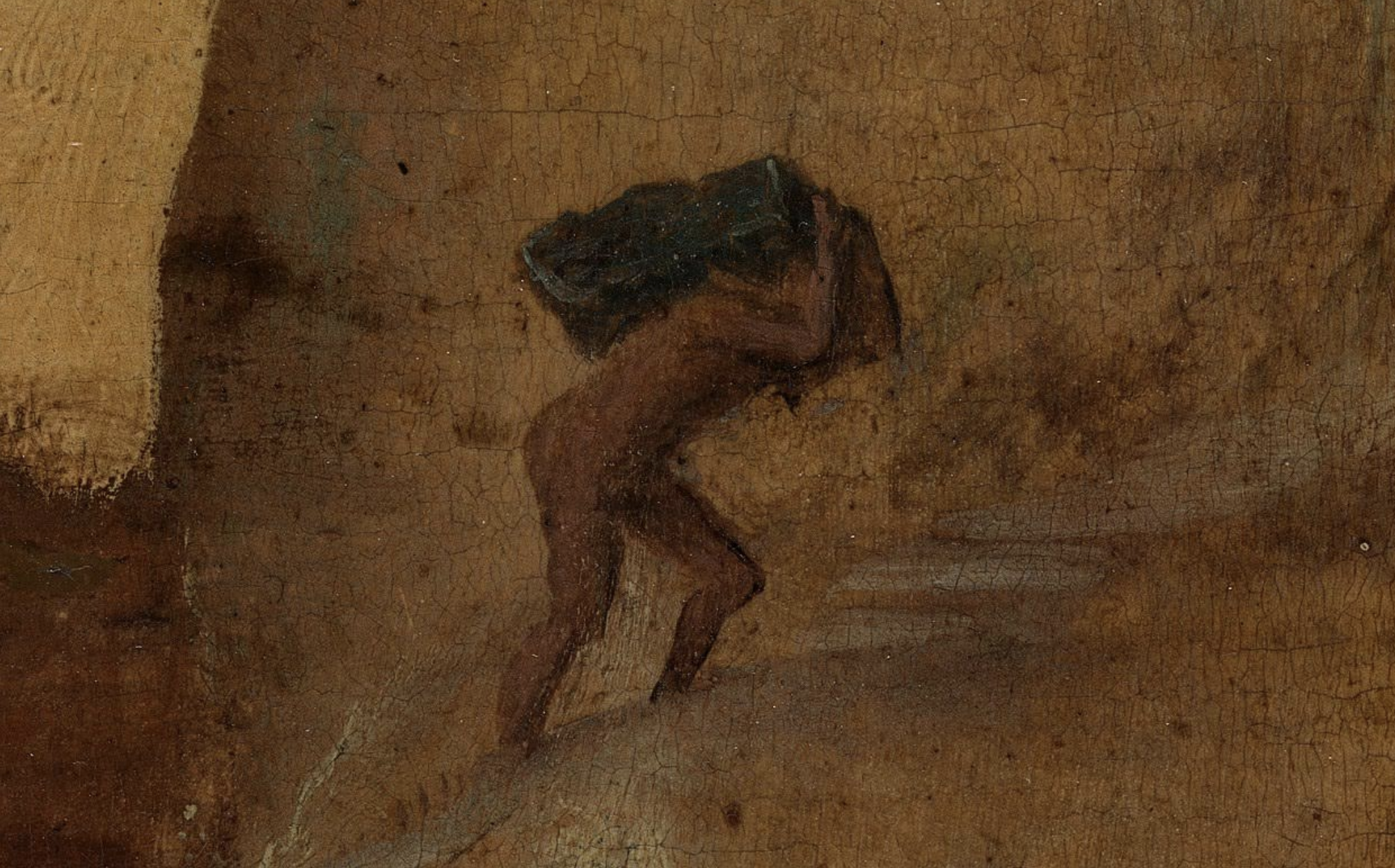
Hieronymus Bosch, Christ’s Descent into Hell, detail of Sisyphus (MET, 26.244) Image public domain.
SPECTRA Vision Episode 7: A Partnership for Uncertain Times
Change is the only constant, we’re often told. That means uncertainty is the only thing that’s certain. Our very existence is subject to this paradox, and this is but one among many. This universe is cruel. It makes us long for certainty while ensuring we’ll never have it. The closest we’ll ever reach is merely the illusion of certainty, and no closer.
Uncertainty makes for an eventful life. You may think, maybe for once, everything will fall in order and you can rest easy, but then a pandemic struck the planet, the seeds of a world war were sowed in the north, your landlord increased your rent, a stranger bumped into you in the streets and spilled your flat white. There’s always something.
Something changes and everything else changes. Some might say this uncertainty is part and parcel of life’s beauty, but I don’t think uncertainty is beautiful. I think it’s annoying and I’d rather not deal with it unless I absolutely have to. What I do think is beautiful is mankind’s relentless struggle to cope with, and even overcome, uncertainty.
This struggle is ultimately futile–a Sisyphean task, as Albert Camus would put it–but it’s beautiful nonetheless. We are doomed, like the mythical Sisyphus, to push a boulder up a mountain knowing full well that it will roll back down once we reach the summit. Sisyphus will never be able to rest. His world will never stay still.
Learning to live with that condition, experiencing it over and over, then instilled in him an appreciation for life’s uncertainty. “The struggle itself towards the heights is enough to fill a man’s heart,” Camus famously wrote, “One must imagine Sisyphus happy.”
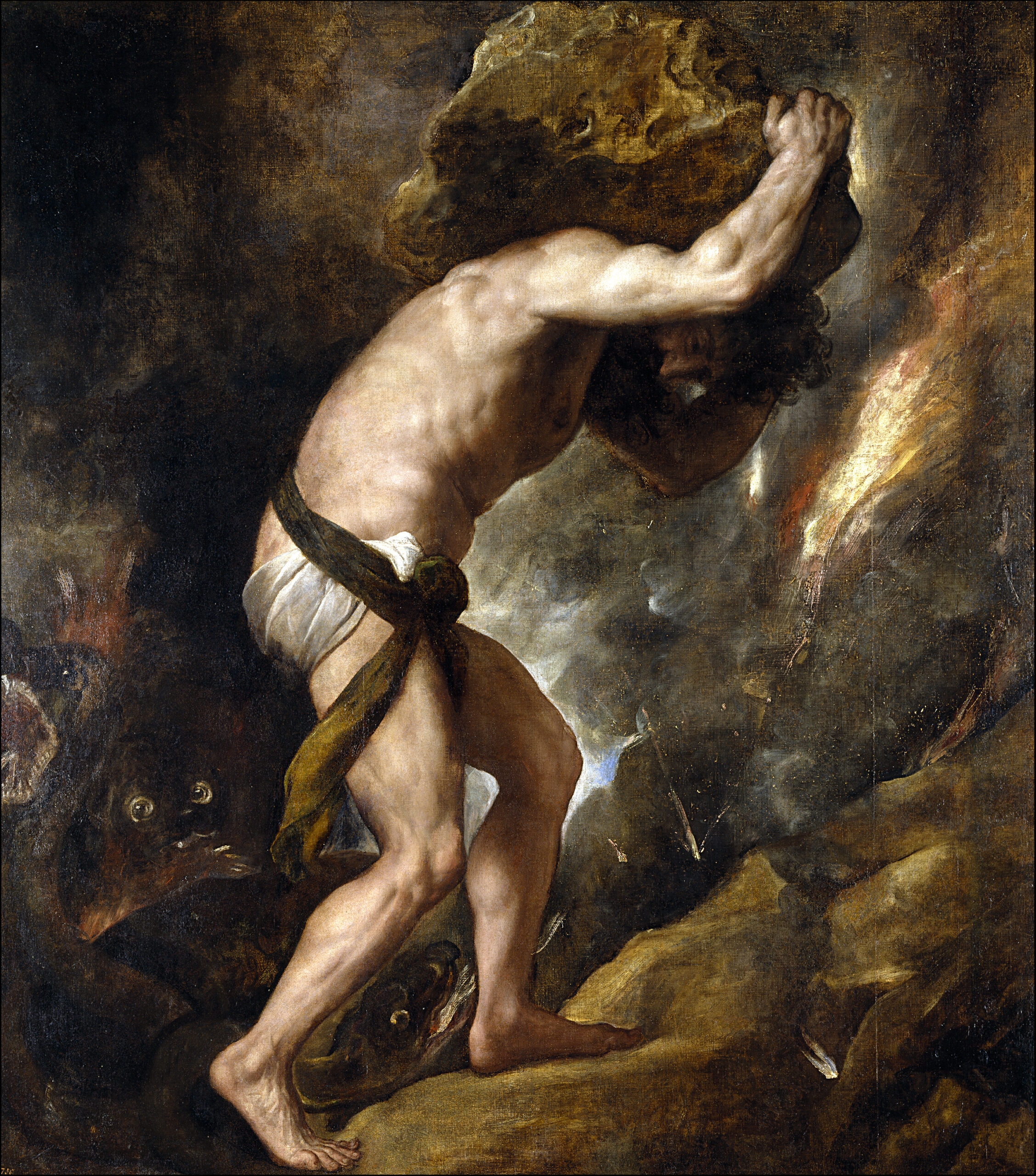
Titian, Sisyphus (1548-1549) Image public domain.
I. Entropy and Equilibrium
Entropy, commonly defined as “the degree of disorder or randomness in a system,” is the measure of uncertainty. The higher the entropy of a system goes, the more uncertain it becomes, and vice versa. But it’s not that simple.
When the entropy of a system reaches its highest threshold–its maximum level of chaos and disorder–that system will attain equilibrium. In other words, the more uncertain your life is, the more certain it is. Paradoxes, right? I had a hard time grasping this concept until I tried it myself, with a little thought experiment.
Imagine stacking books on top of each other. For each book you stack, you’re increasing the entropy of this book tower, and while the books look more orderly when stacked, it also becomes likelier to crumble. Once the tower grows high enough, the slightest gust of wind will destroy it, and only when the books have fallen down, when they scatter on the table and the floor, will the system be 100% balanced. Entropy is the force that both shakes and enables equilibrium. Uncertainty, then, is the only way to be certain.
Our book tower is Sisyphus’ boulder. We long for stability and order. We long to stack the books as high as we can, and to put the boulder at the mountain’s summit. And yet, with all the entropy in the system, we’ll never be able to do so. Given a long enough timeframe, our system will return to its natural state: the equilibrium of uncertainty.
The universe begins with chaos and will end in chaos. Yet we still have the gall to demand order. What can be more beautiful than this uniquely human struggle?
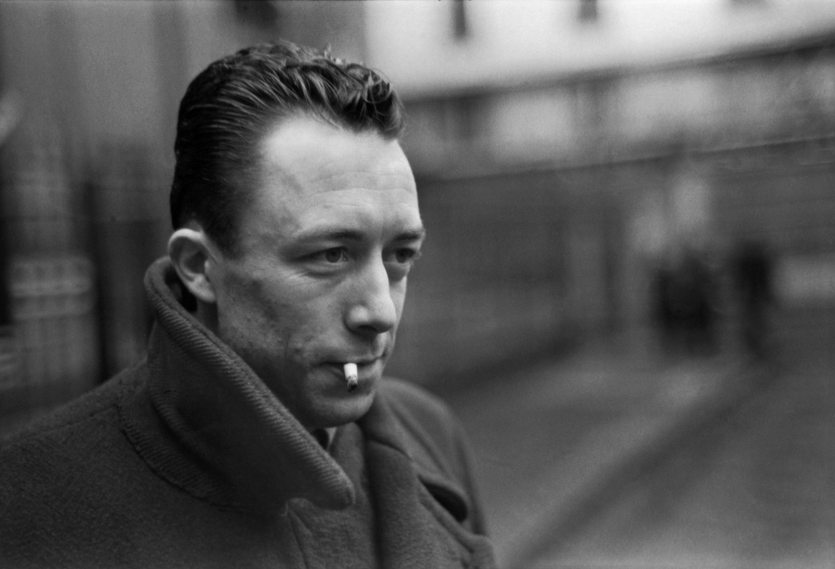
Albert Camus, Paris, 1946, licensed under CC BY-SA 2.0 DEED
II. Things That Gain from Disorder
As fragile creatures with a fragile existence, our fight against uncertainty can only be won by creating antifragile systems. Before we go on, there’s an important distinction to be made here. Antifragility is not “nonfragility.” It is not “sturdiness” or “resilience.” It’s also not “adaptability,” although this one’s hitting closer to the mark.
Coined by statistician Nassim Nicholas Taleb, the concept of antifragility describes a system that “becomes stronger because of disorder.” Contrast that with nonfragility, which means “standing strong in spite of disorder.” Now, the question is, what might be an example of an antifragile system? If everything must reach its highest degree of entropy to attain equilibrium, aren’t all systems inherently fragile?
I can think of at least one example, and that is art. There’s no requirement for structure in art. It barely has any rules, and the few rules it does have are allowed–even encouraged–to be broken. The more chaotic and complex an artwork is, often the more beautiful it is. Art doesn’t just survive amidst entropy and disorder, it thrives on them.
Hence, we’re often told, the most brilliant artists are also the craziest.
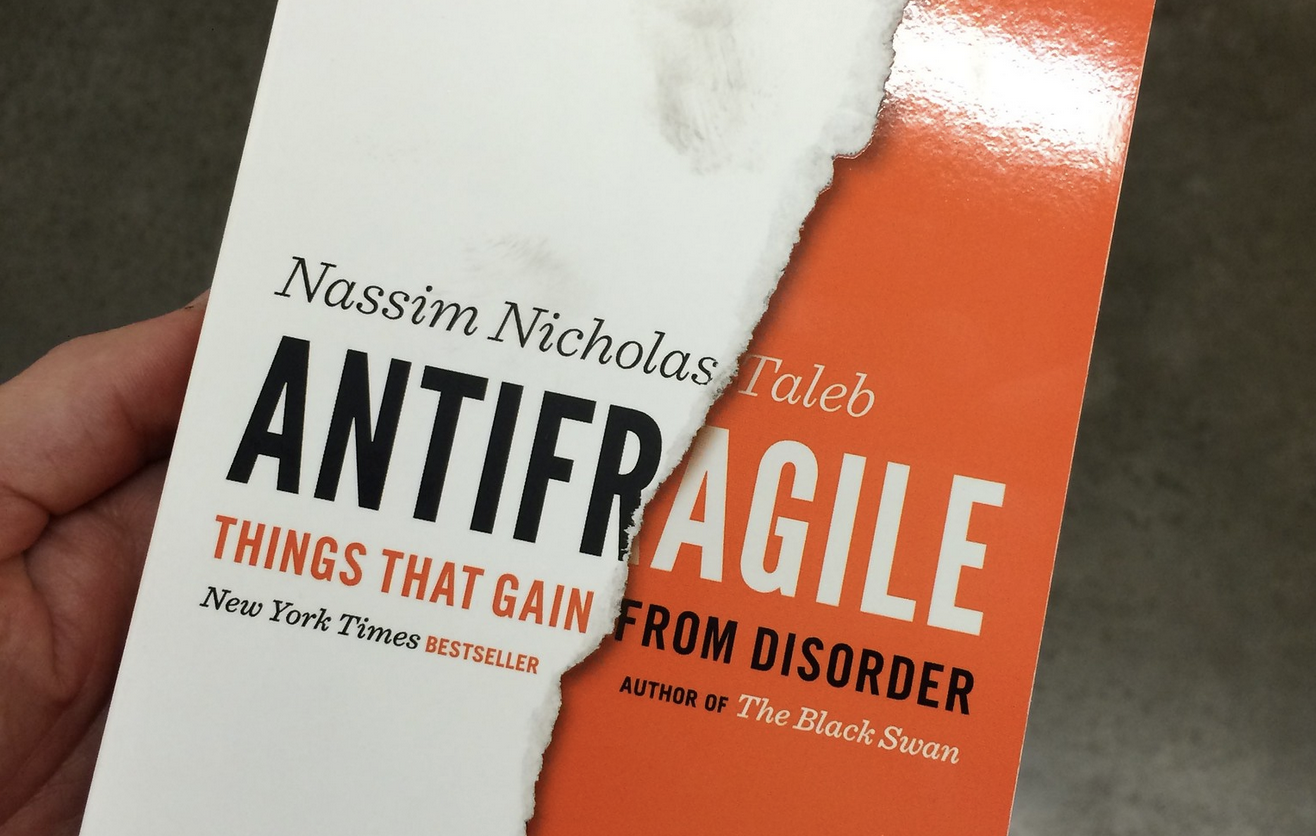
Antifragile: Things That Gain from Disorder, book by Nassim Nicholas Taleb, CC BY 2.0 DEED
III. Zarathustra’s Inner Chaos
This “mad artist” trope often led me to the words of Friedrich Nietzsche, in his magnum opus Thus Spoke Zarathustra, which has been described as a “gorgeous disaster.” He wrote: “One must still have chaos in oneself to be able to give birth to a dancing star.”
Resolving the chaos within one’s mind, unfortunately, also dulls its greatness. We tend to forget the names of artists who didn’t wander into some unknown, and often forbidden, territory. To live and create without limitations is to embrace the primordial and innate disorder of this universe, and to refuse–even actively fight–our unreasonable longing for certainty in this uncertain world.
There’s a reason why we assigned the title “star” to celebrities–those whose presence we “celebrate.” Indeed, few things are more beautiful and worthy of celebration than a star, much less a dancing one. And to create a work with the brilliance of a star, one clearly needs a degree of lunacy–a high level of “inner chaos,” we could say, as opposed to “inner peace.” Art is the last resort to unsolvable problems, and the greatest artworks have always come from artists with wounds to heal and itches to scratch.
Indeed, you must have chaos within you to give birth to a dancing star.
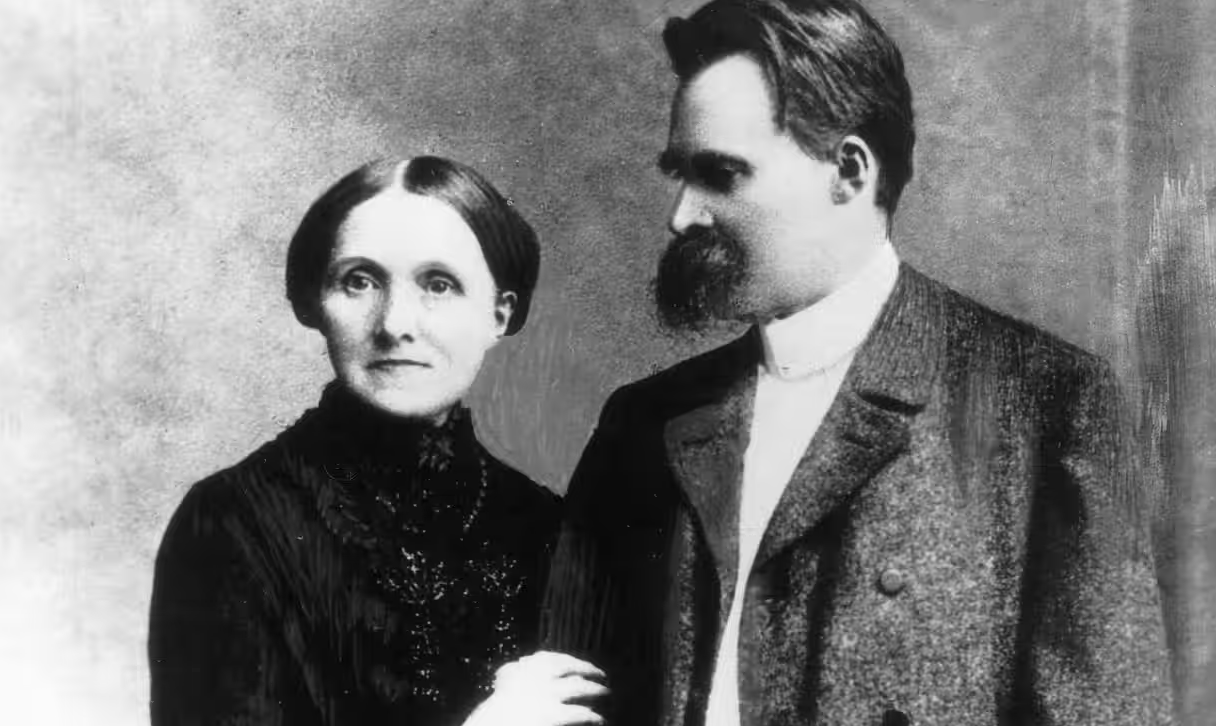
Friedrich Nietzsche with his mother. Photograph public domain.
IV. Coda
The only constant is change. To label a period “uncertain” is about as helpful as labelling water “wet.” If you think about it, when have the times ever been certain? And why would you want them to be? It’s the storm that we remember, not the halcyon days. In matters of art, uncertainty is like oxygen. Take it away, and no fire will ever burn.
Disorder is the primordial state of the universe and the only way to reach equilibrium is by increasing a system’s entropy to the brink. To survive in such an unforgiving world, one must be nonfragile. To thrive in it, one must be antifragile. Not all systems can be geared toward antifragility, but if there’s one that can, it’s art. Art is one of the few things in this universe that gains from disorder instead of losing from it.
Artists, therefore, hold quite a unique power in regard to uncertainty. Who else is more primed to embrace entropy, to channel it into antifragile systems, and to give birth to a dancing star; other than artists? The good news is, everybody’s an artist.
Life itself is a Sisyphean task, but you have the means to win the fight.
May the art you create make you as happy as Sisyphus.
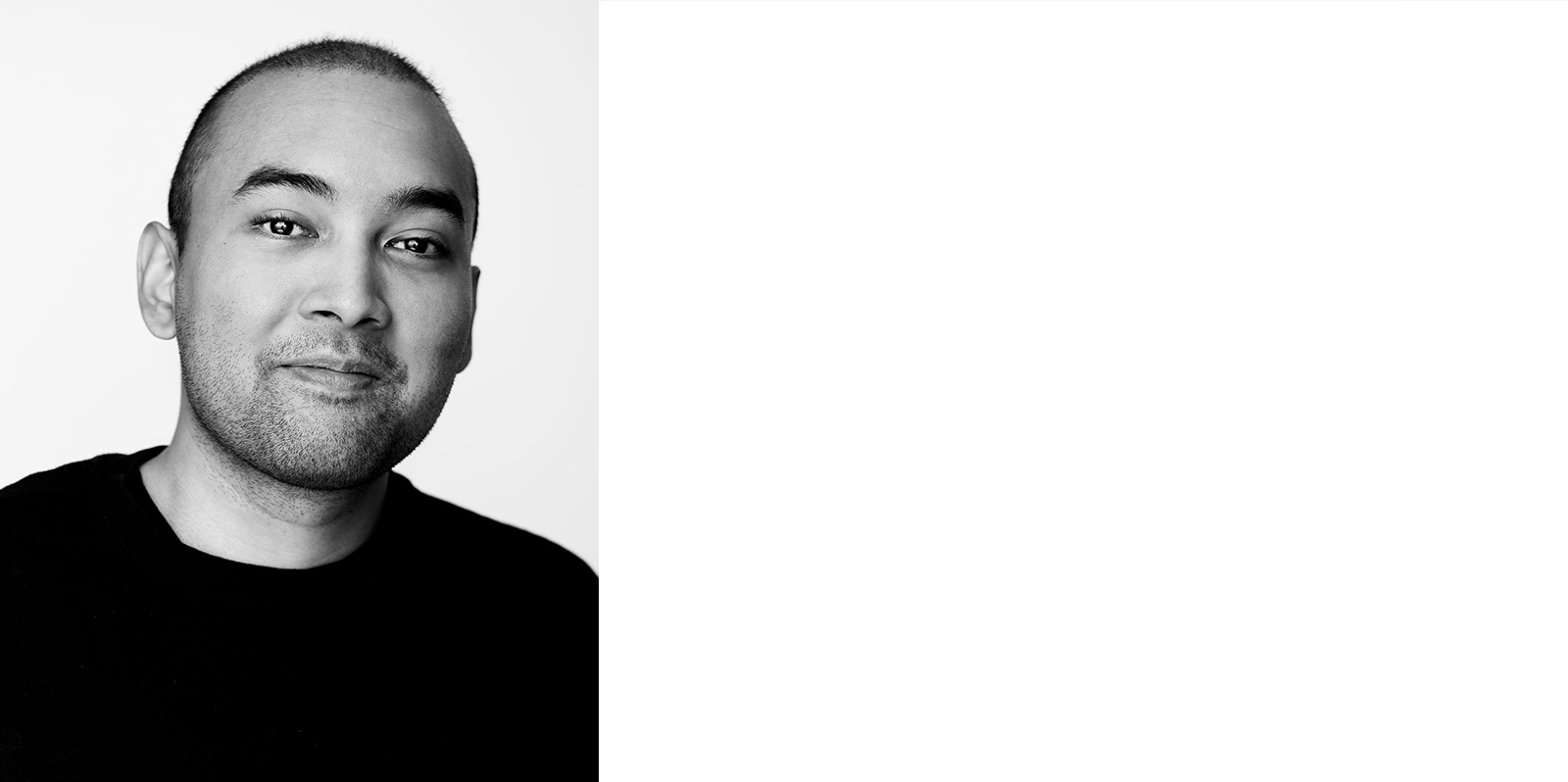
Aushaf Widisto, Emerging Writer and ANAT Arts Administrator
Aushaf Widisto is ANAT’s Arts Administrator and an emerging writer from Indonesia. His writing has been featured in numerous publications across the web, both under his real name and pen name Adam Erland. He is also The Mill’s 2023 Writer in Residence and one of the featured writers in Neoterica 2024. Aushaf’s debut book, A Decade That Matters, written and published with Makna Group Indonesia, will be released in December 2023.